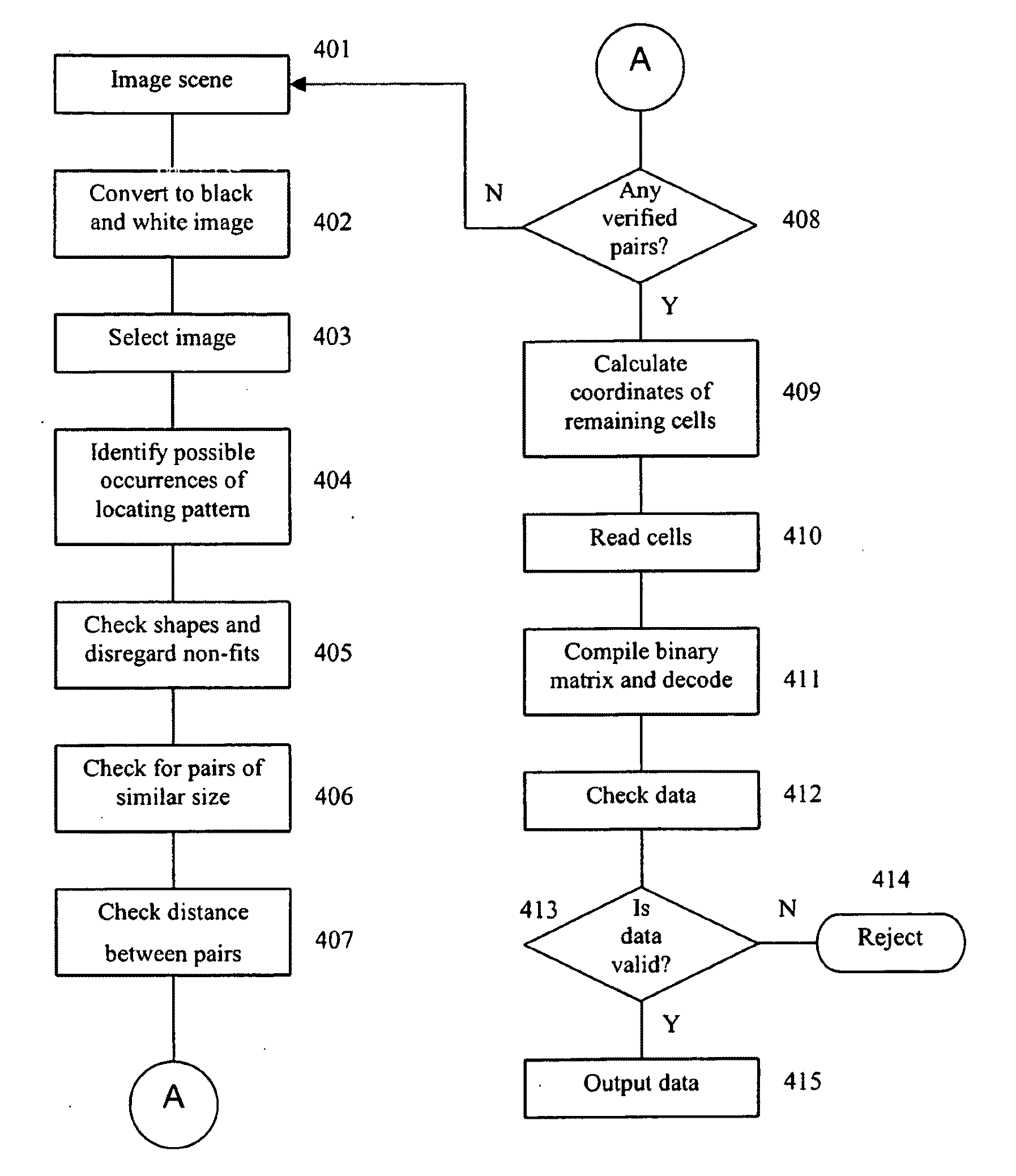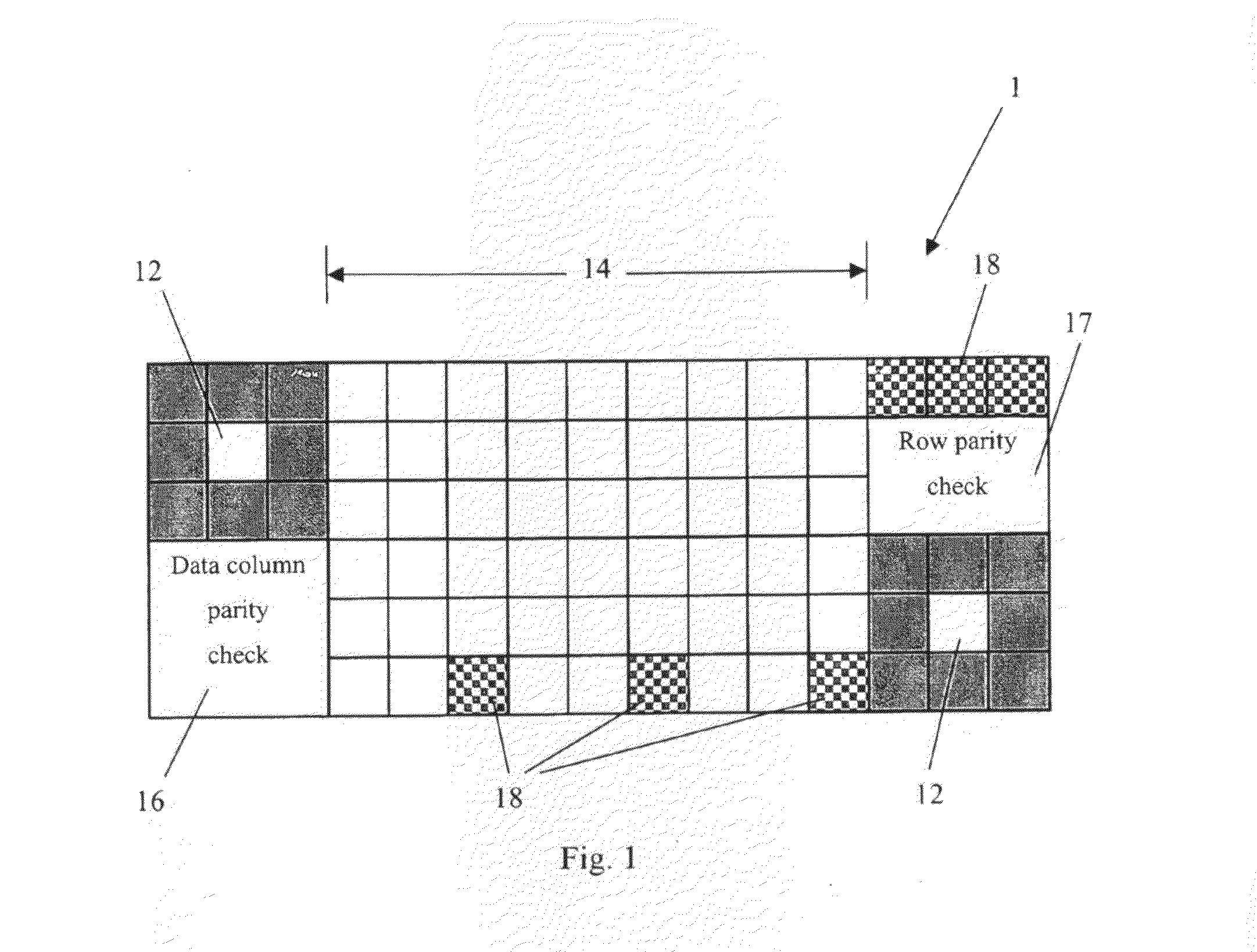Method and Apparatus for Detecting a Two Dimensional Data Matrix
a two-dimensional data and matrix technology, applied in ticket-issuers, sensing record carriers, marketing, etc., can solve the problems of inability to accurately read barcodes using conventional scanning techniques, inability to provide a limited number of one-dimensional barcodes, and inability to accurately detect two-dimensional barcodes from mobile screens, etc., to achieve efficient use of available pixels, increase efficiency in space, and efficient use
- Summary
- Abstract
- Description
- Claims
- Application Information
AI Technical Summary
Benefits of technology
Problems solved by technology
Method used
Image
Examples
Embodiment Construction
[0029]FIG. 1 illustrates an example of a data matrix used in one embodiment of the invention. In this case, the matrix is a 15×6 pattern of cells, although other formats and sizes may be used. It should also be noted that the term ‘cell’ is used here to describe the smallest data portion of the pattern, which may be either black or white in this example, representing different binary data values (or may use other combinations of colours and / or greyscales in other examples), and therefore corresponds to a data pixel in a conventional two dimensional barcode. However, it should be appreciated that a cell may in fact be made up of more than one actual pixel of a display screen, such as a mobile phone screen. In particular, when the matrix is displayed on a mobile phone or similar device, the use of, for example, four or sixteen screen pixels to display each cell (i.e. a 2×2 or 4×4 block of pixels) ensures that the resulting image is large enough to be accurately read. Nevertheless, on ...
PUM
 Login to View More
Login to View More Abstract
Description
Claims
Application Information
 Login to View More
Login to View More - R&D
- Intellectual Property
- Life Sciences
- Materials
- Tech Scout
- Unparalleled Data Quality
- Higher Quality Content
- 60% Fewer Hallucinations
Browse by: Latest US Patents, China's latest patents, Technical Efficacy Thesaurus, Application Domain, Technology Topic, Popular Technical Reports.
© 2025 PatSnap. All rights reserved.Legal|Privacy policy|Modern Slavery Act Transparency Statement|Sitemap|About US| Contact US: help@patsnap.com



